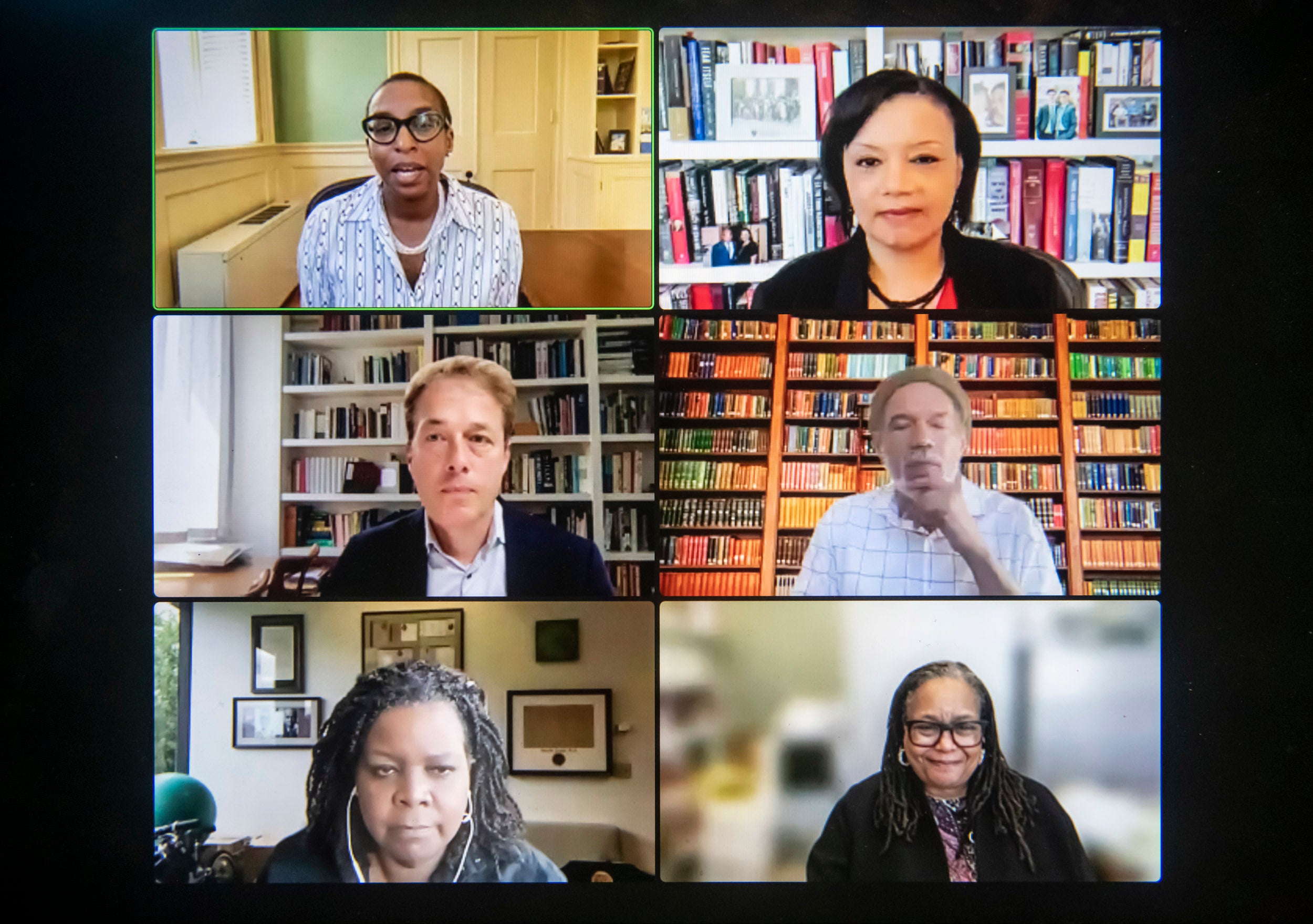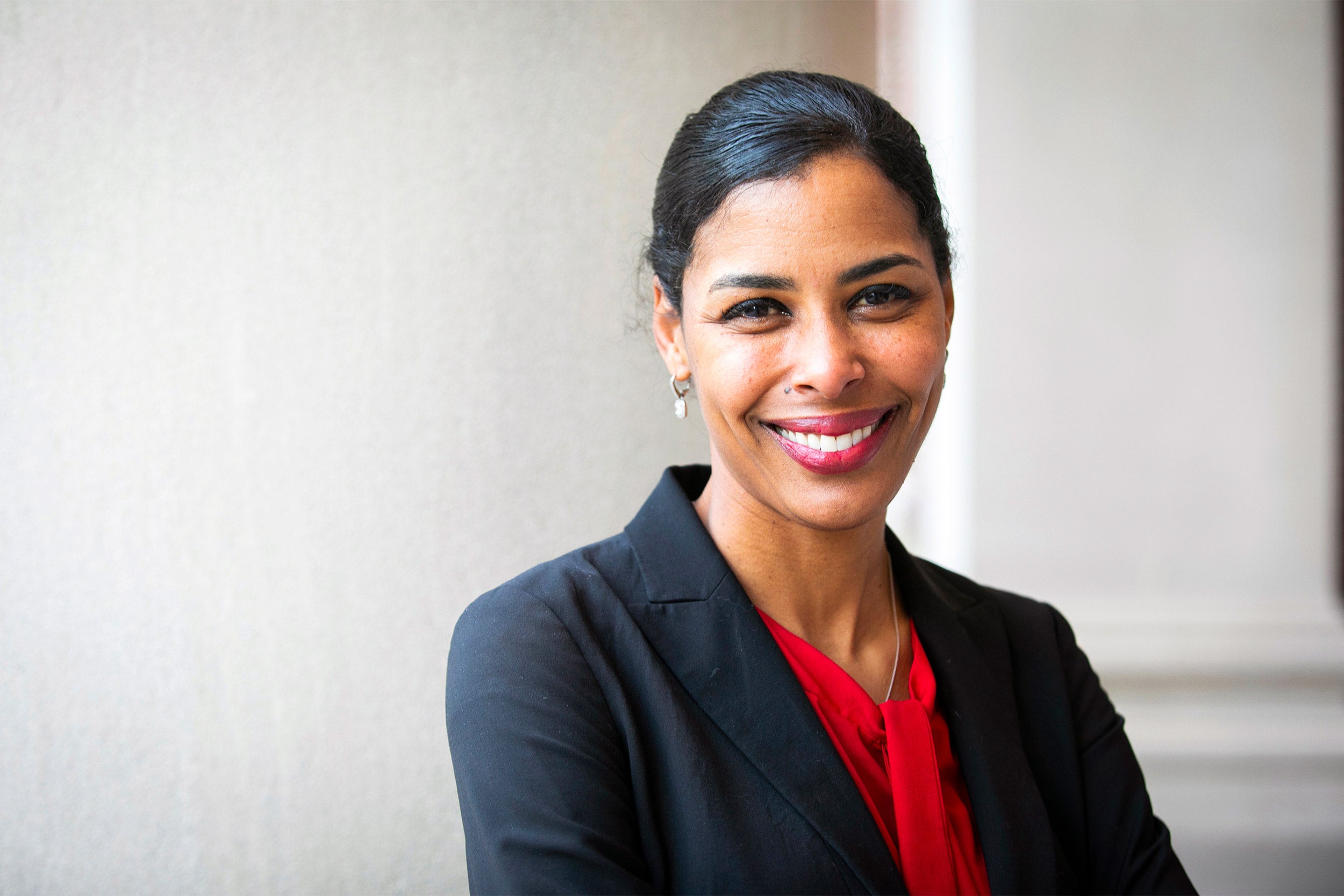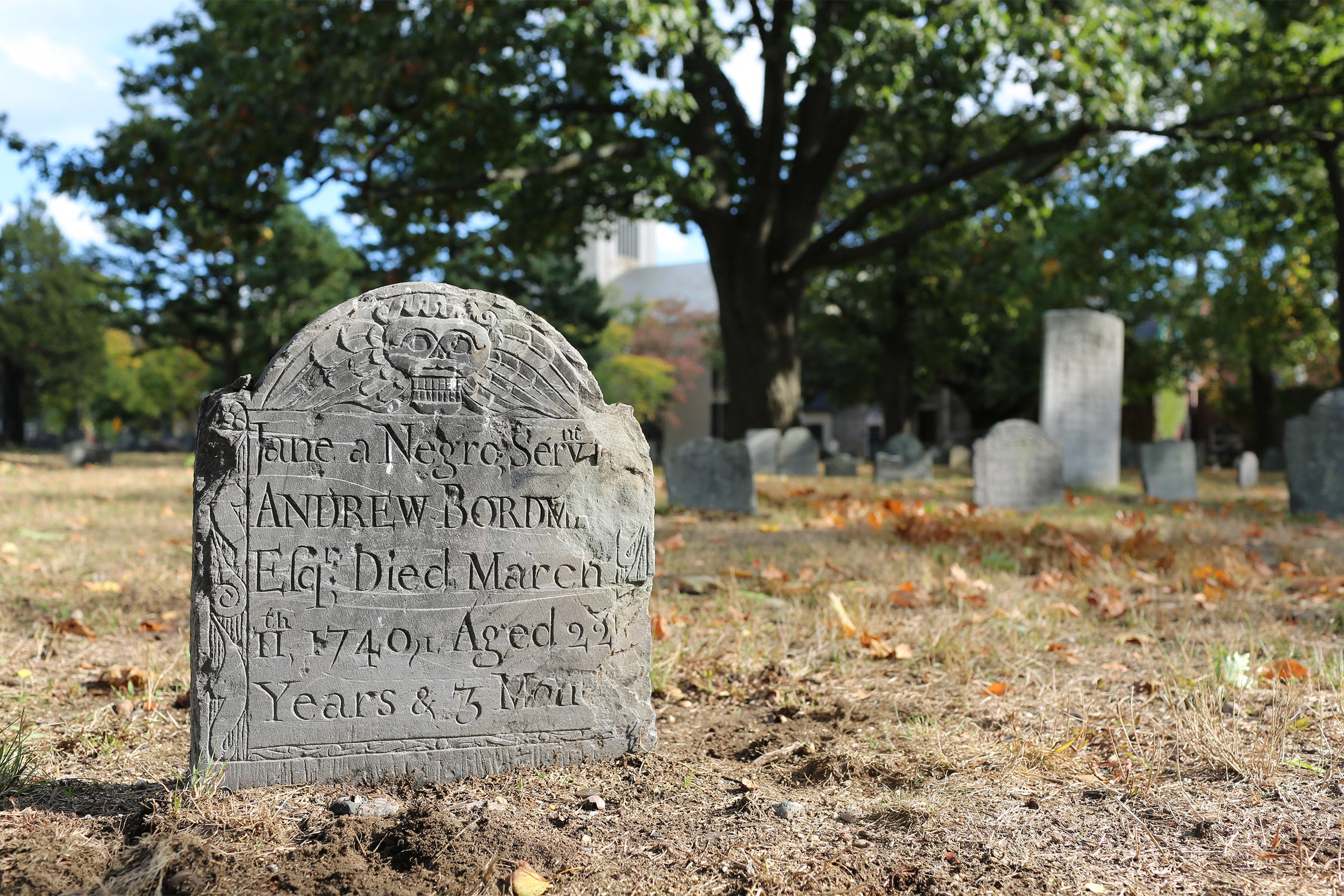
Jane is one of two known enslaved people buried in the historic Cambridge cemetery.
Photo courtesy of Jason Ur
Bringing Legacy of Slavery report to life
Professors find ways to help students engage with findings in meaningful, often unexpected ways — sometimes in places they regularly pass by
Students taking Jason Ur’s course “Can We Know Our Past?” have trekked to the Old Burying Ground in Cambridge for more than a decade to analyze how headstones have evolved through time through design and symbol usage. Two gravesites on the far northwestern side of the cemetery, those of young, enslaved girls Jane and Cicely, require some effort to find.
Little is known about Jane and Cicely, who are the only known enslaved people buried in the historic cemetery, which was opened in 1636 and accepted regular burials until the early 1800s. Back in the classroom, Ur asked students whether they had found Jane and Cicely’s headstones among the more than 700 others. The question typically receives a resounding “no,” prompting students to return to search for the pair’s final resting place.
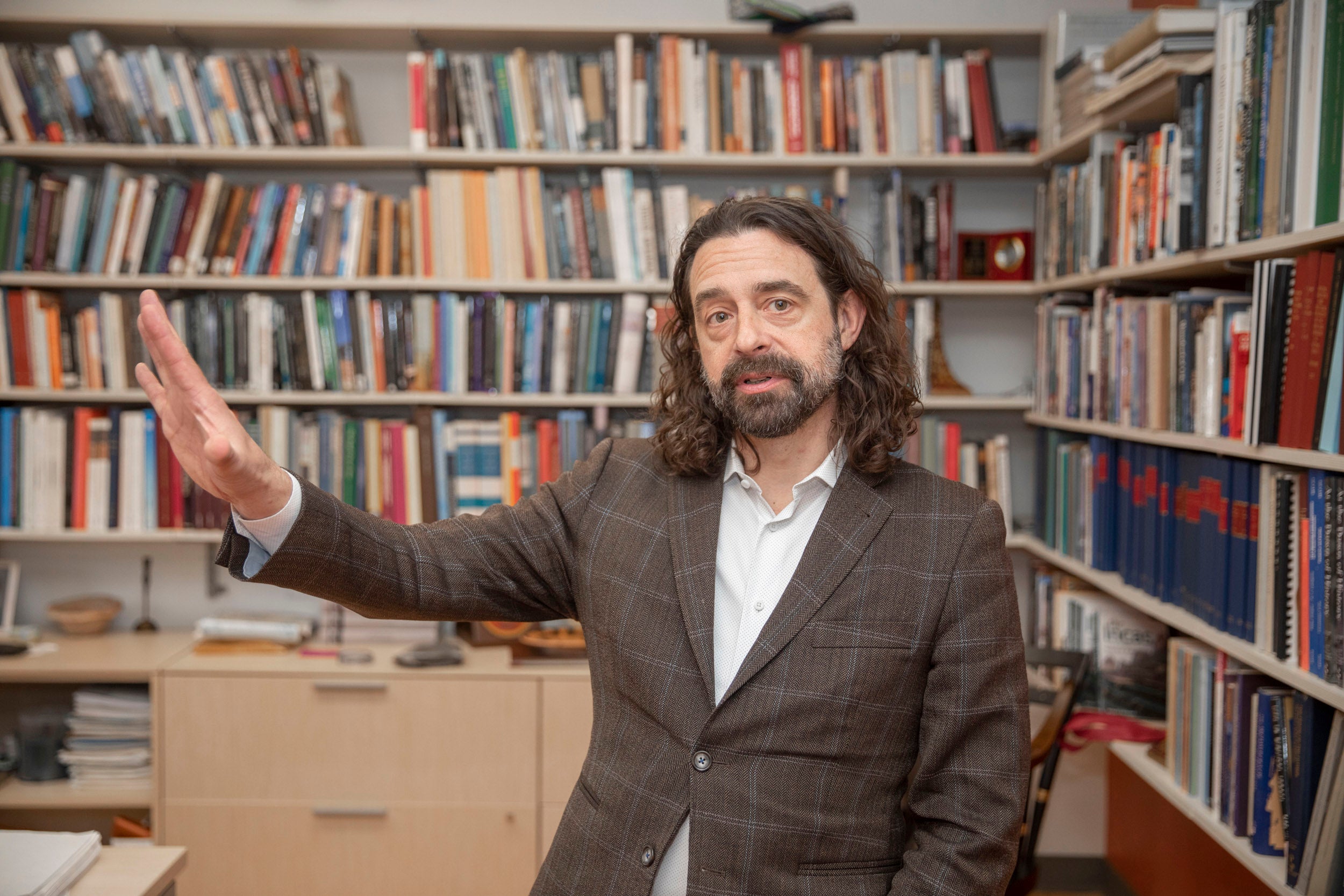
“Here we can talk about inequality; we can talk about racism; we can talk about the Legacy of Slavery in a space that the students know intimately; and that is our campus,” says Professor Jason Ur, whose classroom extends to the Old Burying Ground in Cambridge.
Kris Snibbe/Harvard Staff Photographer
Following the release of the Harvard & the Legacy of Slavery report in April 2022, Ur and other professors have begun to imagine how they can bring one of the report’s recommendations — to honor enslaved people through memorialization, research, curricula, and knowledge dissemination — to life in their classrooms.
“Our students are very interested in the world beyond campus. If you can explore some issues of history or society through a lens that they can appreciate, it can be very powerful,” said Ur, the Stephen Phillips Professor of Archaeology and Ethnology in the Department of Anthropology, who teaches the course with Rowan Flad, John E. Hudson Professor of Archaeology. “Here we can talk about inequality; we can talk about racism; we can talk about the Legacy of Slavery in a space that the students know intimately; and that is our campus.”
In Andrew Clark’s case, the director of choral activities and senior lecturer on music was inspired to think about the findings “particularly through art-making and the performing and creative arts and consider the work of repair that is behind the spirit of the report and its recommendations.”
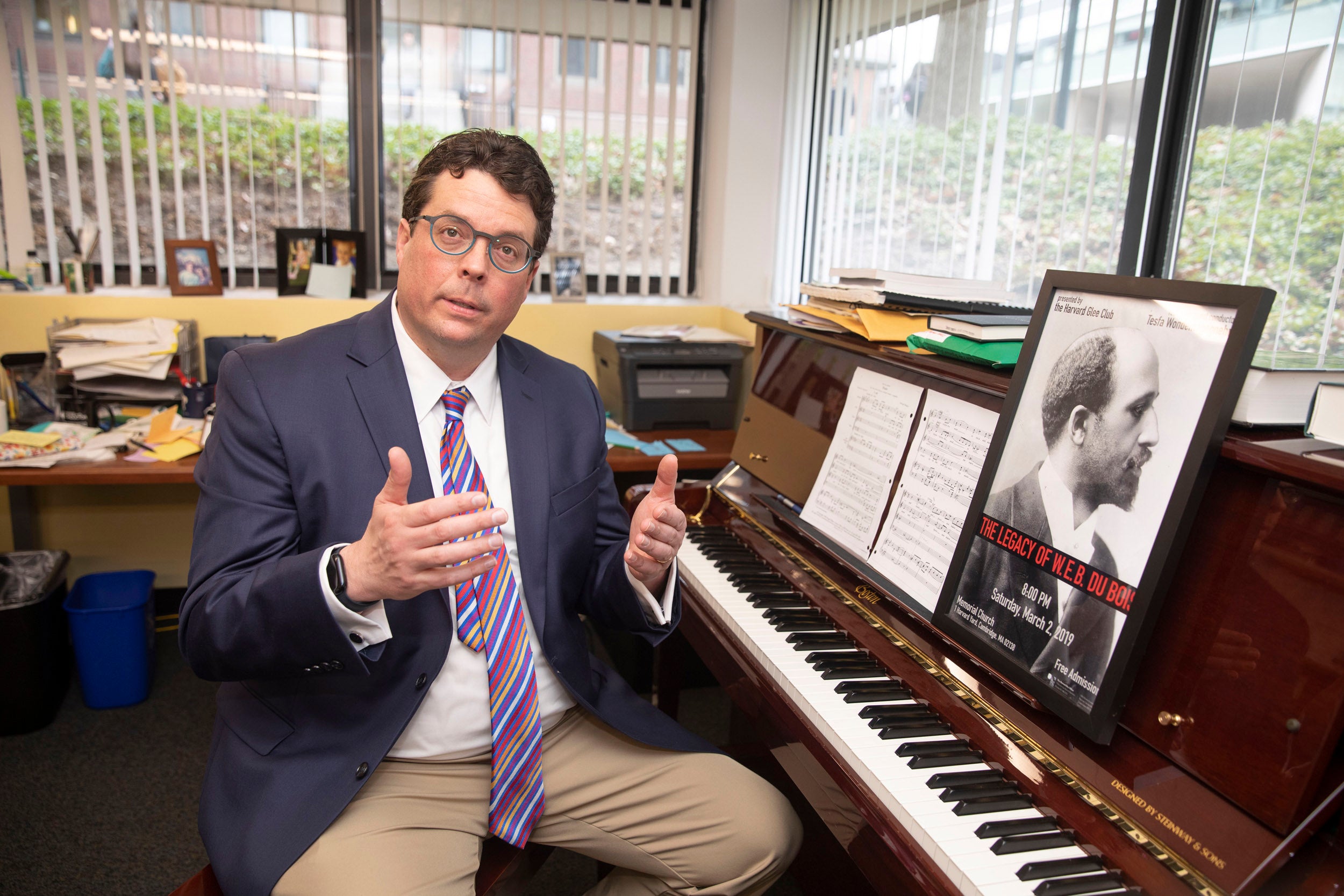
Andrew Clark, who directs Harvard-Radcliffe Collegium Musicum, had his choral students work on a performance piece that posed the question: “What is it going to take to repair our communities?”
Kris Snibbe/Harvard Staff Photographer
“The Harvard & the Legacy of Slavery report prompted a great deal of reflection in both absorbing its painful historical findings as well as considering its recommendations to account for our past,” he said.
Clark attended a two-day seminar in February held by the Derek Bok Center for Teaching and Learning to examine how they might engage with the report content.
“It’s absolutely crucial that our students graduate from this institution understanding the full extent to which slavery, and racial oppression and inequality more generally, have shaped the historical development of the United States and the world,” Adam Beaver, director of pedagogy at the Bok Center, said.
The Legacy of Slavery report highlighted the moral complexity of history. “By exposing students to the complicated duality of Harvard — as an institution that has often, at the very same time, both benefited from and opposed or undermined slavery and white supremacy — we can model for them ways of grappling with the moral complexity of their own lives and legacies,” he added.
Clark, who directs Harvard-Radcliffe Collegium Musicum, had his choral students work on a performance piece by St. Olaf College Professor Tesfa Wondemagegnehu called “To Repair.” The piece is based on a 60-day trip he took to locations that held historical or cultural significance to Black Americans. What began as a 30-minute work for a choral ensemble at the University of Michigan was later adapted for Clark’s class, which posed the question: “What is it going to take to repair our communities?”
“It’s a very challenging piece because of the weight of its content, not unlike reading the Legacy of Slavery report,” he said. “It’s painful. It’s heavy. It seeks to tell the truth and to do so in a way that sheds light on the work of repair that needs to happen. It also uplifts both the resilience of those who faced oppression and the necessity for renewal and investment.”
Ur hopes his classroom effort will uncover the names and identities of other enslaved people who may be buried at the Old Burying Ground. Jane and Cicely, aged 13 and 22, are buried far from the families that enslaved them. Their presence inspired Ur to take on a project with Aja Lans, a postdoctoral fellow with the Inequality in America Initiative, who thinks the two are likely not the only enslaved people interred at the burial ground. Ur and Lans believe that an unmarked area near Jane and Cicely’s plots is the final resting place of other enslaved people.
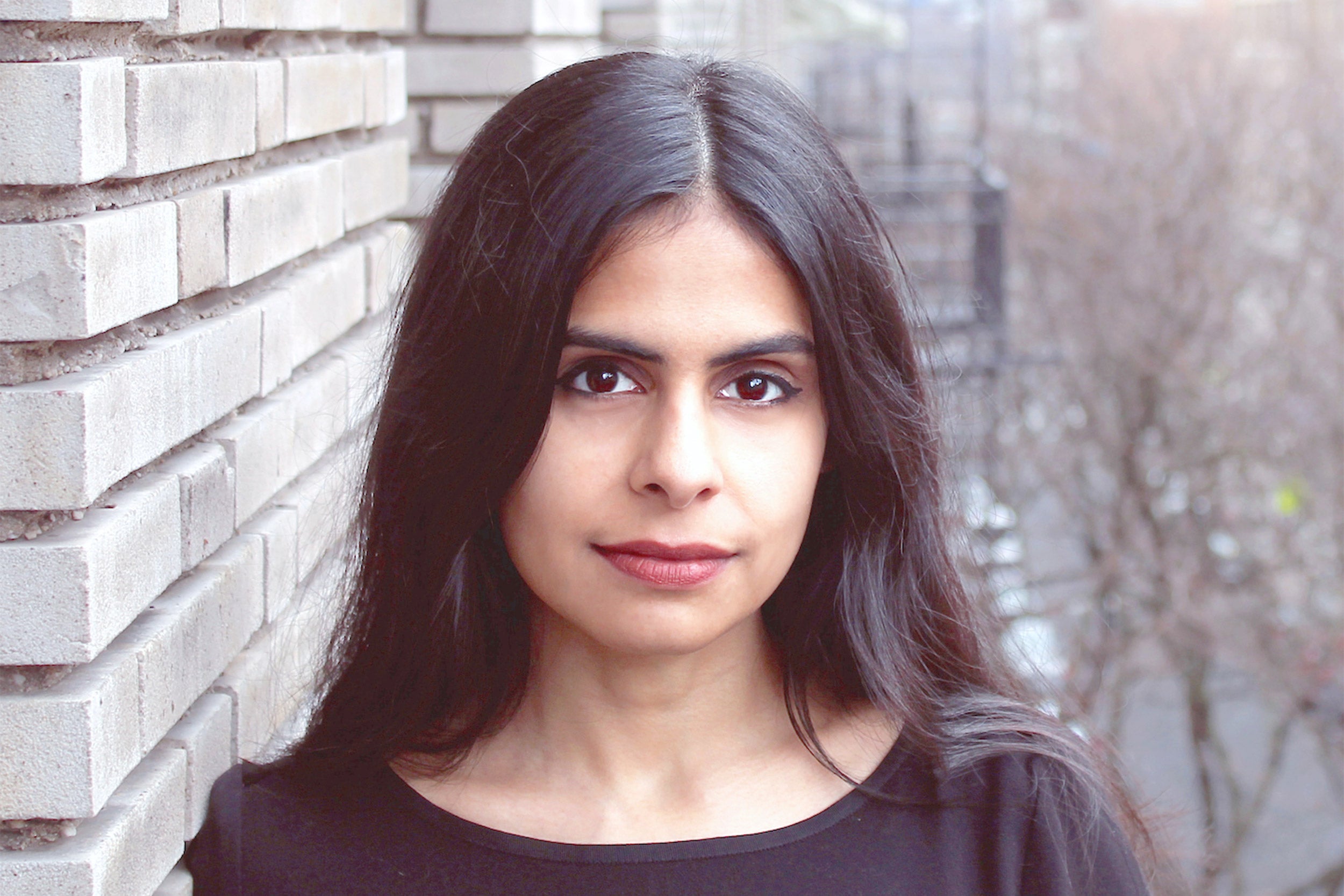
“I want students to think about how Harvard & the Legacy of Slavery is an account of the histories that live in the institutional spaces that we occupy every day,” says Associate Professor Durba Mitra.
Photo by Manan Ahmed
“Jane and Cicely might be where the Negro burying area of the old cemetery was,” Ur said. “It’s an interesting opportunity for us to put some people literally on the map who lived in Cambridge but are otherwise under-recognized.”
More like this
Durba Mitra, Richard B. Wolf Associate Professor of Women, Gender, and Sexuality, is doing a deep dive into the report, asking her students to consider its very framing and usage.
“I want students to think about how Harvard & the Legacy of Slavery is an account of the histories that live in the institutional spaces that we occupy every day,” she said. “The report does critical labor to demonstrate what histories exist within the shelves of the University archives and across the landscape of Harvard’s campus. It documents the fragmentary lives that appear and are disappeared in these documents. The report brings out histories that physically live in the walls of the institution.”
Last fall, Mitra collaborated with Robin Kelsey, dean of arts and humanities, and Lauren Kaminsky, director of studies and associate senior lecturer in the Committee on Degrees in History & Literature and a faculty associate at the Davis Center for Russian and Eurasian Studies, in their course “Making It: Mahindra Scholars Seminar.”
Mitra, who writes about reports as a dominant genre in politics, discussed how reports are one way institutions hold themselves accountable for their histories, and how those in the minority can use the reports to substantiate claims against institutions.
“I believe that Harvard & the Legacy of Slavery report should be central to every aspect of our curriculum, because it is a testament to interdisciplinary practices of evidentiary research. The report speaks to the history of the institution in which we work and live,” she said.
Going forward, Mitra and Ur said they envision the report becoming a permanent fixture in their courses.
“It is vitally important that we remember that this work did not start in the president’s office,” the Bok Center’s Beaver said. “It started in a single seminar room, in the notebooks of a handful of curious undergraduates and a single professor who dared to ask themselves some uncomfortable questions about the lives and experiences of their forebears at this institution. I always believe this is Harvard at its best — an intergenerational community of faculty and students willing to set aside its own hierarchies and mythologies in pursuit of the kind of truth that can change the way we see the world around us.”



